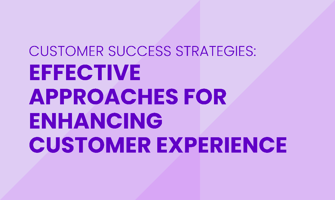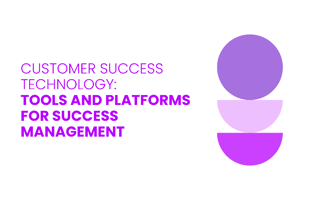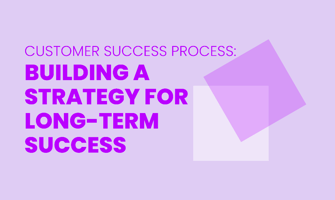Creating a strong customer success strategy is important for any business wanting to keep customers...
Customer Success for SaaS: Tailoring Strategies for Software Companies
For a Software-as-a-Service (SaaS) company, keeping customers happy and loyal can boost revenue. Customer success means helping users get the best results from the software and avoiding churn.
This involves:
Engagement
Onboarding
Regular check-ins
Important roles include:
Customer Success Managers
Implementation Specialists
Tracking metrics like customer retention and satisfaction is important. From onboarding to feedback collection, every step is to ensure customers stay and thrive.
Understanding Customer Success for SaaS
The main goals of a customer success strategy in SaaS are to lower churn, boost customer satisfaction, and ensure business success.
Customer success teams work on keeping customers, checking feedback, and improving engagement scores. For SaaS brands, user onboarding is vital for a good customer experience.
Customer success managers use onboarding steps, tooltips, and success plans to help users. SaaS Customer Success is about ongoing relationships and lifecycle management, not just support or account management. It aims to create long-term value through continuous engagement and feedback loops.
Investing in customer success early helps SaaS companies lower churn rates and increase customer lifetime value. Automation and self-service content also make the strategy more effective.
Tracking key metrics like churn rate, support tickets, and user engagement scores is essential. Successful SaaS companies use ticketing software, interactive walkthroughs, and other tools to boost customer stickiness and satisfaction.
The role of a customer success team, including various managers, is very important for overall business success and customer loyalty.
Building an Effective Customer Success Team
Role of a Customer Success Manager
A Customer Success Manager in a SaaS company ensures customer satisfaction and retention. They handle the onboarding process to help users quickly see the value in the software.
They engage with customers proactively and create plans to align customer goals with the company's offerings. Their strategies include using tools like ticketing software and tooltips to track key metrics such as customer engagement scores and churn rates.
They analyze customer feedback to improve the customer experience and address support tickets quickly.
They work closely with customer support and account management teams to build strong relationships. This helps ensure customer loyalty and reduces churn.
Skills in customer success operations, understanding self-service content, and using automation are important for success. Effective customer success managers help SaaS companies keep high customer retention and satisfaction by focusing on the entire customer lifecycle, from acquisition to long-term engagement.
Crafting a Successful SaaS Onboarding Process
Designing a good SaaS onboarding process involves several steps.
Align the process with customer goals.
Keep the process relationship-based.
Success plans should have clear milestones and helpful tooltips. Automation can make the journey smoother and improve customer experience. Customer feedback helps make the onboarding better.
Measure success by tracking:
Satisfaction scores
Customer engagement score
Monitor key metrics like churn rate and lifetime value. High churn can be reduced with proactive customer support and success teams. These teams enhance engagement and stickiness.
Use:
Self-service content
Ticketing software
Customer success tools
Customer success managers help ensure customers find value early. SaaS companies can also improve by analyzing support tickets and using a service blog for common issues.
Ensuring a smooth user onboarding boosts customer loyalty, acquisition, and overall business success for subscription-based SaaS companies.
Key Metrics for SaaS Customer Success
Metrics Calculator Tools
Metrics calculator tools make it easier to track SaaS customer success metrics. They automate data collection and analysis. This reduces churn and improves customer satisfaction.
Look for these features in a good tool:
Integration with other SaaS platforms
Automation of customer feedback responses
Real-time insights on metrics like churn rate, customer lifetime value, and engagement score
These tools help understand user behaviors during onboarding and throughout the customer journey. They combine data from:
Customer success tools
Ticketing software
Customer support systems
CRM platforms
This helps track important factors like customer stickiness, support ticket trends, and Net Promoter Scores. With these tools, SaaS companies can improve their success plans and customize tooltips for a better customer experience.
Metrics calculators support strategies focused on customer retention, loyalty, and satisfaction. This ensures business success for subscription-based SaaS brands.
Reducing Customer Churn Rate
Customer success in SaaS companies can help reduce customer churn. They use various strategies and tools to achieve this.
Customer success teams and managers should identify at-risk customers. This can be done by tracking key metrics like customer engagement score and customer lifetime value.
To address issues quickly, SaaS businesses should set up feedback loops. This can be done using tools like ticketing software and self-service content.
Personalized communication is also important. Tooltips and targeted messages can enhance customer experience and satisfaction.
User onboarding and ongoing support are important too. A well-planned onboarding process boosts customer stickiness and loyalty.
Customer success units should focus on relationship-based strategies. This includes customer support, account management, and customer success operations.
Successful SaaS brands often use customer success tools to forecast problems. These tools help maintain customer retention.
Providing a value-driven success plan and creating a seamless customer journey are important steps.
Regularly reviewing support tickets and incorporating feedback into service blogs and plans keeps the company responsive to customer needs.
This ultimately drives business success and reduces churn rates.
Enhancing Customer Engagement Score for SaaS
To track and improve customer engagement scores, SaaS companies can use a customer success team focused on practical strategies.
These strategies include:
Offering a smooth onboarding process
Using interactive tooltips
Employing customer success tools for automation.
Personalized communication and user feedback mechanisms, like feedback loops and success plans, can boost customer engagement and satisfaction.
Data analytics and user behavior monitoring help SaaS brands understand customer needs. They can track key metrics like churn rate and customer stickiness and offer a tailored customer experience.
Using ticketing software and monitoring support tickets can further enhance the user experience.
By creating self-service content, SaaS companies can reduce customer churn and increase customer lifetime value.
The customer success manager aligns team efforts with customer journeys. This ensures that every interaction adds value to the customer’s subscription-based relationship with the SaaS platform.
This approach promotes ongoing customer retention, loyalty, and overall business success.
Strategies to Improve Customer Satisfaction
To improve customer satisfaction in a SaaS business, companies can try several strategies:
Gather customer feedback through support tickets, surveys, and self-service content.
Use this feedback to improve the customer experience and address issues.
Use personalized communication. Customer success managers should use tools like automation and tooltips to tailor interactions based on each customer’s journey and engagement score.
Provide proactive customer support. Engage users early in their onboarding process and maintain regular check-ins to ensure ongoing satisfaction.
Implement a success plan to map out key customer goals and milestones. This helps in retention and reduces churn rates.
Track key metrics like customer churn and customer satisfaction.
Use automation and effective account management to monitor customer engagement and enhance the user experience.
This supports a relationship-based approach throughout the customer lifecycle.
Importance of Customer Stickiness Score
The Customer Stickiness Score helps SaaS companies grow by measuring how engaged and loyal customers are. This helps reduce churn. Customer success teams track this score to see how well users stay after onboarding.
A high score often shows that the customer success manager and team are doing a good job. This metric affects both churn rate and customer retention. SaaS brands can refine their success plans by understanding what features users value most.
The insights gained from this score can improve customer experience. This leads to higher satisfaction and fewer support tickets. Self-service content, tooltips, and better onboarding also help improve the customer lifecycle.
Tracking this score, along with metrics like churn rate and engagement score, helps SaaS companies gather feedback. They can then make informed decisions for continued success. Automation and customer success tools also aid the customer journey. This helps with customer acquisition and increases customer lifetime value.
Leveraging Userpilot for Better Customer Success
![]()
Integrating Userpilot into your onboarding process can improve user experience and success rates. It provides interactive tooltips and personalized walkthroughs. These features guide users through the product. This increases customer engagement and satisfaction.
Specific features include:
In-app messages
Targeted prompts
These can address potential issues. This reduces customer churn and increases retention.
Userpilot's analytics and feedback tools offer insights into customer behavior and satisfaction. Customer success managers can tailor strategies to meet user needs. By monitoring key metrics like customer engagement score and churn rate, SaaS companies can better forecast issues and improve support.
Automation and self-service content further enhance the customer journey. This makes the whole process smoother for both the user and the customer success team. These tools help turn feedback into actionable plans, improving customer loyalty and lifetime value in subscription-based SaaS businesses.
High Touch vs. Low Touch Account Management
High touch account management involves personalized interactions. It's often managed by a dedicated customer success manager. This method suits customers with a high risk of leaving or those needing complex onboarding.
On the other hand, low touch strategies rely on automation and self-service content. This is ideal for customers with simple needs. SaaS companies decide which approach to use by looking at customer engagement scores, churn rates, and the complexity of customer needs.
High touch engagement boosts customer loyalty and satisfaction but can be resource-heavy. Low touch management allows scalability and saves costs but may struggle to keep customers. Both methods use tools like support ticket systems, tooltips, and service blogs to improve user experience.
Monitoring key metrics like churn rate and customer lifetime value helps SaaS businesses adjust their strategies. This improves customer acquisition and satisfaction. Effective account management in SaaS requires a mix of personalized support and automated services. This ensures a smooth customer journey and business success.
The Role of Customer Support in Customer Success
Good customer support helps customers succeed in a SaaS business. It resolves issues quickly, making customers happy and reducing the number who leave. Support teams work with customer success managers to learn from customer interactions. This helps find problems and improve the onboarding process.
Steps include:
Using ticketing software to track issues and measure churn rate.
Creating self-service content like a blog.
Providing tooltips during user onboarding.
Automation helps handle routine tasks, allowing more focus on a personalized approach. Collecting and acting on customer feedback increases engagement and loyalty. Good support also helps attract new customers by promoting a positive experience. This leads to higher retention and lifetime value for SaaS brands.
The relationship-based approach uses customer success units to manage the customer lifecycle. They use tools and key metrics to track progress and ensure business success.
FAQ
What is the importance of customer success for SaaS companies?
Customer success is crucial for SaaS companies as it leads to higher retention rates, increased referrals, and consistent revenue growth. Providing excellent customer support, tailored onboarding processes, and regular check-ins are key to ensuring customer satisfaction and long-term success.
How can software companies tailor their strategies for customer success?
Software companies can tailor their strategies for customer success by creating personalized onboarding plans, offering regular training sessions, gathering feedback through surveys, and providing excellent customer support. They can also enhance the user experience by implementing features based on customer requests.
What are some common challenges in implementing customer success strategies for SaaS companies?
Common challenges in implementing customer success strategies for SaaS companies include:
Ensuring proper onboarding and training for new users.
Defining and measuring key metrics for success.
Providing timely and effective support to resolve customer issues.
Managing feedback and incorporating it into product improvements.
How can SaaS companies measure the success of their customer success initiatives?
SaaS companies can measure the success of their customer success initiatives by tracking metrics like customer retention rates, Net Promoter Score (NPS), and customer satisfaction surveys. They can also monitor the usage of their software to assess the value customers are deriving from it.
What role does customer feedback play in the customer success process for software companies?
Customer feedback plays a crucial role in the customer success process for software companies by helping identify areas for improvement and driving product development. For example, feedback on product bugs can lead to quicker resolutions and enhanced user experiences.




